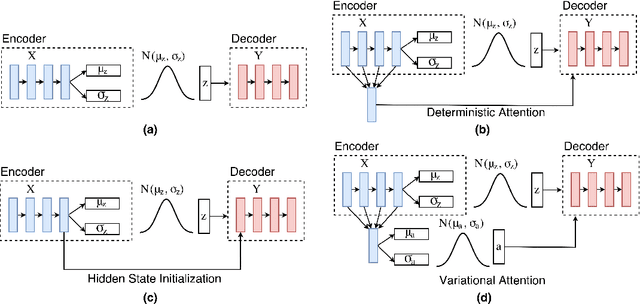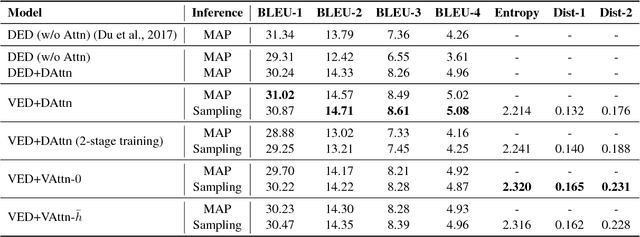Variational Attention for Sequence-to-Sequence Models
Paper and Code
Jun 21, 2018



The variational encoder-decoder (VED) encodes source information as a set of random variables using a neural network, which in turn is decoded into target data using another neural network. In natural language processing, sequence-to-sequence (Seq2Seq) models typically serve as encoder-decoder networks. When combined with a traditional (deterministic) attention mechanism, the variational latent space may be bypassed by the attention model, and thus becomes ineffective. In this paper, we propose a variational attention mechanism for VED, where the attention vector is also modeled as Gaussian distributed random variables. Results on two experiments show that, without loss of quality, our proposed method alleviates the bypassing phenomenon as it increases the diversity of generated sentences.
 Add to Chrome
Add to Chrome Add to Firefox
Add to Firefox Add to Edge
Add to Edge